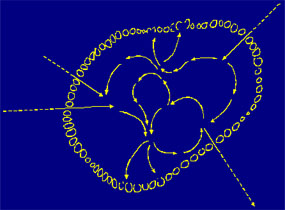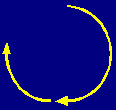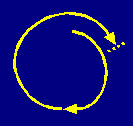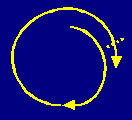Defining ‘Life’Life is the result of increased complexity, new forms or structures. But, of course, it's not all equally complex things that are alive. Life depends not just on new structure, but it depends on a new structure that allows for new kinds of functions. Now, as I mentioned, even the simplest of actual cells is incredibly complicated and it's too complicated to portray here. So the question is: What would you need to have the very, very simplest example of something living? Well here's what the philosophers of biology would say: They say that you can define something as alive if you can meet these three conditions. First of all, it's self contained, it has some sort of a boundary. And so here's my drawing of the simplest possible cell and it simply has a boundary that separates it--what's inside from what's outside. Minimal Universal Cell
Second, it has self maintenance. That is, whenever it looses energy or matter to the environment it has a way of taking in energy or matter to replace it in order to replenish itself. Down underneath here, non-life, there's not enough coming in for it to continue in a circle. Non-Life
If you get enough material coming in that it can perpetuate itself then you've got one of the criteria for life available. So self-containment and self-maintenance, the possibility of repairing itself. Balanced Replacement (self-perpetuation)
And then finally, to have life you need reproduction. And so it has to expand or grow. Expansion (growth)
And if you can imagine it growing enough that the second piece can be detached somehow and take off performing these functions on its own, then you've got a primitive form of reproduction. Multiplication (reproduction)
And so if you've got those three conditions met, by definition you can say that your little blob of organic matter is alive. So we reject vitalism. All you need for life is matter, properly organized, so it can perform these functions.
|





